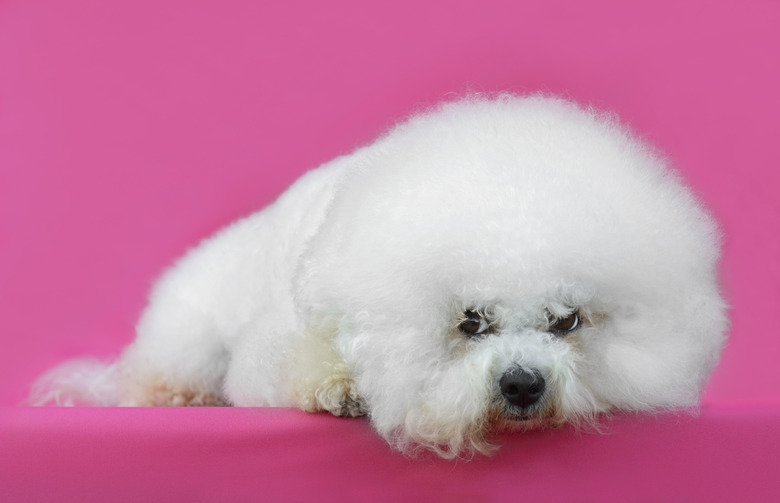Difference Between Maltese & Bichon Dogs
Being both small, white, and fluffy, it's no wonder why you're having difficulty knowing whether that adorable pup you passed in the park was a Maltese or a bichon. Despite their similarities, once you put them side by side, it'll likely be easier to tell the two breeds apart. Their coats, hair texture, and overall looks are just a few distinguishing factors. Learning more about both breeds will keep you from confusing each other.
Maltese vs. bichon
Maltese vs. bichon
The barbet, a curly-coated water dog, was the ancient ancestor of several breeds including the bichon frise. When the barbet was crossed with several light-colored lap dogs from the Far East, it gave life to the barbichon, later shortened to bichon, a group of small, white companion dogs. Over the years, dogs within this group evolved into four distinct breeds: the bichon Bolognese, the bichon Havanese, the bichon Maltese and the bichon Tenerife—from which originated today's bichon frise.
Maltese vs. bichon histories
Maltese vs. bichon histories
As the name implies, the Maltese was established in Malta, a group of islands off the southern coast of Italy where these royal creatures were adored for many centuries and nicknamed "Ye Ancient Dogge of Malta." The bichon frise, instead, accompanied English and Spanish sailors on voyages from the Mediterranean to the Canary Islands, where they became popular on the Island of Tenerife. They were cherished by the Italian nobility and French aristocrats, but after falling out of fashion, they converted into circus performers. Their name means "small dog with curly hair."
Bichon and Maltese dog categorizations
Bichon and Maltese dog categorizations
Despite both breeds being small in size, the Maltese and bichon are categorized by the American Kennel Club under two different breed groups. The Maltese is categorized under the toy group, a collection of cute pooches sharing diminutive sizes; the bichon belongs to the non-sporting group, an agglomeration of dog breeds featuring different sizes, temperaments, and looks.
Bichon and Maltese coats
Bichon and Maltese coats
A good way to distinguish a Maltese from a bichon is by looking at the coat. The Maltese boasts a single coat comprised of long, silky white hairs hanging over both sides of the body and almost touching the ground. A kinky, curly texture or a texture resembling wool is frowned upon in this breed.
The bichon, on the other hand, boasts a double coat that must have a soft undercoat. Unlike the Maltese, a curly, coarse topcoat is highly desired in the bichon, while a silky coat that falls down is considered a serious fault.
Two different temperaments
Two different temperaments
With a history of being cherished for centuries, it doesn't come as a surprise that Maltese are known for being charming, pampered pooches who love to sit on your lap. Don't be fooled by their royal looks. These dogs make feisty watchdogs and lively agility competitors, but they can have a stubborn streak.
The Bichon frise have a cheerful attitude, are easy to train, and, reminiscent of their history as circus performers, they love to show off and entertain with their antics.
Different health and life spans
Different health and life spans
While most Maltese are healthy, they may suffer from hypothyroidism, knee joint problems, epilepsy, allergies, heart disease, dental disease, and eye problems. Their biggest health problem is from injury, given their small frame. The average life span of the Maltese ranges between 13 and 15 years.
For the bichon, dental care is important; this breed is prone to early tooth loss and gum infection. Other health concerns include allergies, bladder infections, ear infections, cataracts, and knee joint problems. The average life span of the bichon is between 16 and 18 years.
References
- American Kennel Club: The Maltese
- American Kennel Club: The Bichon Frise
- American Kennel Club: Official Standard of the Maltese
- American Kennel Club: Official Standard of the Bichon Frise
- American Kennel Club: Meet the Barbet
- Your Purebred Puppy: Maltese Health Problems and Raising a Maltese Puppy to be Healthy
